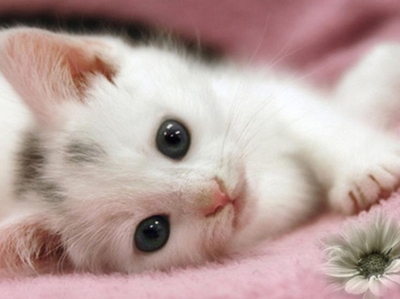
In our last blog we dove into the alphabet soup of canine core vaccines – DA2P and RV. Our feline friends have their own “alphabet” of vaccine abbreviations. Your cat’s record may have such notations as FeLV, FVRCP or FIV
Similar to dogs, a panal of experts, in this case from the American Association of Feline Practitioners, has provided vaccination guidelines that allow veterinarians across the county to provide the best preventative care for cats. Vaccines are again divided into “core”, optional or “noncore”, and “not generally recommended”.
There are four core vaccines for cats. Core vaccines are recommended for every kitten and cat. The first core vaccine is Rabies virus. Vaccination guidelines are the same as for dogs. Every kitten should receive a Rabies vaccine which should then be boostered at 1 year of age, then every 1 to 3 years depending upon local ordinances.
Feline Panleukopenia Virus (FVP) is the second core vaccine. This virus behaves very similarly to the Parvovirus in dogs; in fact, they are in the same virus family. Rapidly dividing cells, such as white blood cells and intestinal cells, are attacked by the virus. The white blood cell numbers decrease, weakening the immune system. As the intestinal cells are destroyed, vomiting, diarrhea and dehydration rapidly result. This disease is life-threatening and requires aggressive medical care. A full kitten series of Panleukopenia virus vaccinations followed by an adult booster one year later is needed. After that time, revaccination every 3 years is considered protective. This vaccine may be abbreviated as the “P” in your kitty’s record.
The third core vaccine is Feline Herpesvirus-1 (FVH-1). This virus causes the disease known as feline viral rhinotracheitis or, in our alphabet soup, the “FVR” of the vaccination abbreviation. Rhino- refers to the nose, trache- to the windpipe, and- itit indicates inflammation. Putting it all together, you may have guessed that this virus causes upper respiratory infection. The eyes may also become infected by this virus. Signs include sneezing, nasal congestion, conjunctivitis, fever, depression and discharge from the eyes and nose. Just like the herpesviruses that affect people, when a cat becomes infected, it wil carry this virus for the rest of its life. In times of stress, the virus can be reactivated and ifection can occur all over again.
Feline Calicivirus (FCV) is the final recommended core vaccine. This virus is another important cause of upper repiratory infections in cats. Signs are similar to the Feline Herpesvirus. However, this virus also may cause oral disease in cats. Ulcers on the tongue, hard palate, gums, lips or nose may develop. You may notice excessive drooling and reluctance to eat because of these painful ulcers. Both the Herpes- and Calici- viruses are highly contagious and are easily transmitted from cat to cat. Vaccination guidelines are the same for both diseases. After the initial kitten series of FVR and FVC vaccinations and first adult boosters, revaccination is recommended every 3 years.
If you have been paying close attention, you may have noticed some letters of the vaccination “alphabet soup” have not yet been mentioned. In the final installment of this vaccine information series, noncore vaccines for both dogs and cats will be discussed. Start thinking about your pet’s lifestyle – it is an important factor in determining what other vaccines your veterinarian may be recommending.
